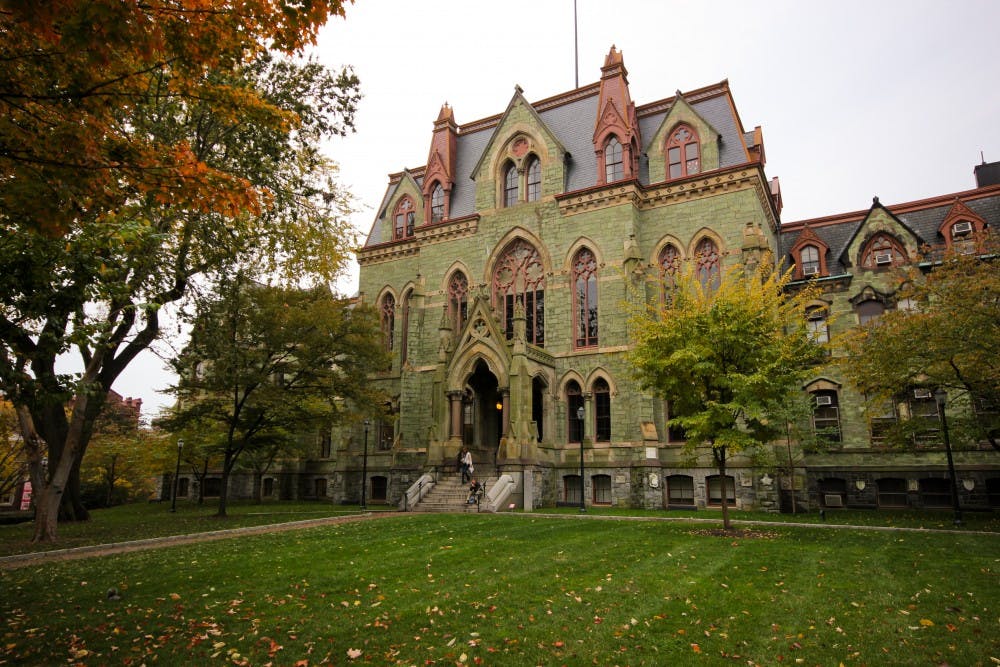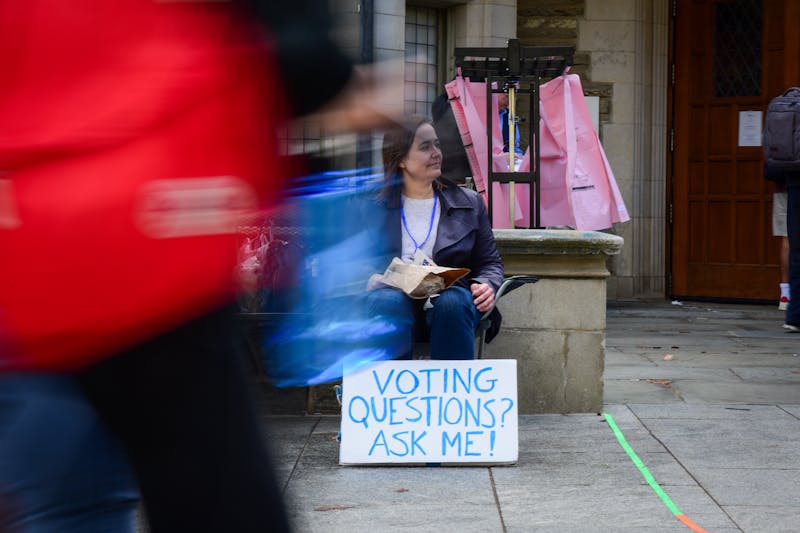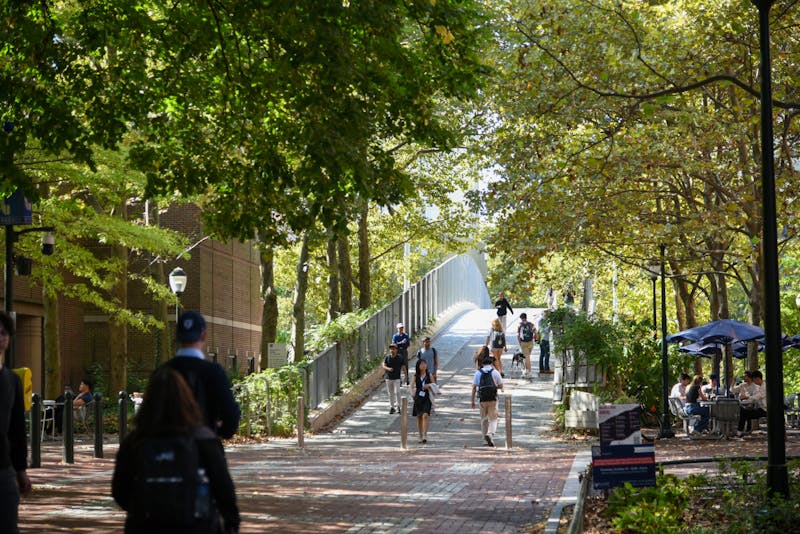
An increasing desire among colleges to build a well-rounded class may put Asian-American students at a disadvantage.
As admissions offices nationwide have adopted holistic admissions policies, judging applicants by their subjective merits as well as their numerical qualifications, race has emerged as a significant factor in admissions decisions. Although related policies like affirmative action are designed to prevent unfairness towards certain minorities and promote campus diversity, the system of holistic admissions has the potential to create a new kind of racial discrimination against Asian-American students.
Because many Asian-American students have high grades and test scores, they are often held to higher standards by admissions officers, according to a Princeton University study. The research sought to discover how racial ethnicity affects admissions decisions by using SAT scores to measure the advantage provided by race, compared to white applicants.
The study found that applying as an African-American provides an advantage equivalent to an additional 230 points on the SAT, while Hispanics received a 185-point boost. Asian Americans have a "bonus" of negative 50 points.
Although the Asian population in the United States has been steadily increasing, the percentage of Asian students at Ivy League universities — including Penn — has remained roughly the same over the past two decades, according to data provided by the National Center for Education Statistics.
Data from fall 2013 indicate that at the time, 18.7 percent of Penn undergraduates identified as Asian-American or Pacific Islander.
By contrast, at the California Institute of Technology, where race is not considered in admissions decisions, the proportion of Asian students has nearly doubled over the past 20 years. 44 percent of undergraduates enrolled at Caltech in the 2014-2015 academic year identified as Asian, according to the Registrar's office.
The legal question
In November of 2014, an organization filed a lawsuit against Harvard, alleging that Harvard had doled out an unfair rejection against an Asian-American due to racial bias within the admissions system.
Although Harvard — an early supporter of considering race in admissions decisions — said it does not have racial quotas and evaluates each applicant on an individual basis, the suit claimed that Harvard propagates discrimination against Asian students by taking in race as a holistic measure in the admissions process.
The case was filed on behalf of the student by Students for Fair Admissions, a nonprofit organization aiming to end race-based admissions policies. The leader of the group is investment broker Edward Blum, who also played a key role in the high-profile 2012 case Fisher v. University of Texas that brought the issue of affirmative action back to the Supreme Court.
“That [Supreme Court] opinion created a much higher hurdle for universities to overcome if they intend to use racial classifications and preferences in their admission policies,” Blum said. “It is our belief that all these competitive schools are not complying with that new hurdle.”
Blum said it is a challenge for universities to strive for diversity while avoiding discrimination. “Universities must walk a very fine line in raising the bar for some based on race and lowering the bar for others based on their race in order to achieve diversity,” he said.
The Harvard lawsuit has yet to be resolved, but the growing trend of holistic admissions policies has made it easier for all colleges to justify actions that may be considered discriminatory. The holistic process of considering race as one of many factors used in admissions has been declared constitutional by the Supreme Court, though the Court has struck down admissions policies that use racial quotas.
“The fact that the Supreme Court has pushed schools to this individualized holistic assessment means that it’s very hard to say what’s going on with any individual applicant,” Penn Law professor Kermit Roosevelt said.
And although it has been argued that affirmative action policies providing advantages to minority groups like blacks are to blame for discrimination against Asians, the fault may lie with holistic admissions in general.
“The number of students who lose spots to minorities because of race-based affirmative action is a pretty small number, and that’s not what is keeping down the number of Asians,” Roosevelt said. “What’s keeping down the number of Asians is not using race as a plus factor for underrepresented minorities, but using race as a negative factor for Asian applicants.”
But it is not certain what makes it more difficult for Asians students to get accepted to top colleges.
“It could be something about the holistic admissions system looking for well-rounded applicants or particular extracurricular activities that the Asian applicants don’t tend to have,” Roosevelt said. “Or it could be straight-up racism.”
Penn: diversity or discrimination?
Although Harvard is the only Ivy League university that has been formally accused of having unfair admissions policies, discrimination against Asian applicants may be occurring within the walls of College Hall as well.
“Based on the limited public information that we have about Penn, Penn is indeed racially balancing its freshman admittees as well as limiting the number of Asians it will accept,” Blum said. “What the data indicates to us, and to many observers, is that while Penn is raising the bar and lowering the bar as well as most competitive universities based on race, Penn is also engaged in a de facto quota limiting the number of Asians that it will take.”
Meanwhile, Penn maintains that it is committed to diversity and fairness.
“Diversity at Penn is central to our educational mission,” Penn Director of Media Relations Ron Ozio said. “The University has in the past strengthened, and continues to strengthen, the community by recruiting academically accomplished students who provide a diversity of backgrounds, experiences, interests and perspectives to enrich and support the lively exchange of ideas and intellectual experience.”
The Admissions Office could not be reached for comment for this article.
Blum said there is a difference between seeking “cosmetic” diversity — diversity based only upon appearance — and true diversity: differences in background that bring unique perspectives to a freshman class.
“To have various backgrounds of kids who grew up in rural areas, kids who grew up in inner city ghettos, kids who come from single-parent households,” Blum said. “All of those things tell us much more and create a much more truly diverse environment than the fact that you were born with a certain skin color.”
While Blum acknowledged that diversity is a worthy goal for colleges, he said it is unacceptable to work towards cosmetic diversity by using race as a factor in admissions.
“If Penn just wants to pursue cosmetic diversity for the sake of cosmetic diversity, and achieve this through quotas and racial balancing, then that is absolutely not okay,” he said.
The consequences of unfairness
College freshman Mitchell Chan, who is Chinese-American, left the the box on his application indicating his race empty. At his high school, a magnet school in San Francisco where the majority of students are Asian, it was a well-acknowledged fact that the college admissions process is more difficult for Asians, he said.
“We all knew that being Asian doesn’t actually help you,” Chan said. “We weren’t fooled by affirmative action speak. We knew it did not apply to us.”
Chan explained that many students from his high school with one Asian parent and one white parent identified as only white on their applications in order to avoid potential admissions consequences resulting from being Asian.
Chan believes Asian students are at a disadvantage because many take the same classes and participate in the same activities, making it more difficult to stand out to admissions officers.
“A lot of Asian students who are very qualified tend to do a lot of the same things,” Chan said. “A lot of them are in the orchestra, a lot of them take AP Chem, a lot of them take AP Physics.”
And a huge number of these students are vying for the same spots at top universities. “There’s definitely no short supply of very talented Asian-American students applying to schools like Penn,” Chan said.
But Chan does not believe that suing universities is the answer. “We don’t think it’s something worth going to court over,” he said. “They expect more from us, but we just have to give them more.”
Engineering sophomore Katie Wu, who attended an international high school in Shanghai, said she did not feel that she faced personal discrimination because of her race. But she believes that discrimination does occur on some level for Asian students applying from inside the United States.
“There’s a ton of really qualified [Asian] students who apply to Penn from local schools and who don’t get in,” she said. “I think it’s important to investigate whether it is because of race that they were rejected.”
In general, Wu feels discrimination against Asians is an issue, even after being accepted to college.
“I haven’t felt it actively, but it’s definitely there,” she said. “At least there’s a need for us to prove ourselves.”
Wu believes that these policies may be here to stay. “I don’t know where it’s going to go. I don’t think the admissions process is going to change very much,” she said. “It’s worth it to investigate and know that these biases and discriminations exist.”
The Daily Pennsylvanian is an independent, student-run newspaper. Please consider making a donation to support the coverage that shapes the University. Your generosity ensures a future of strong journalism at Penn.
DonatePlease note All comments are eligible for publication in The Daily Pennsylvanian.







